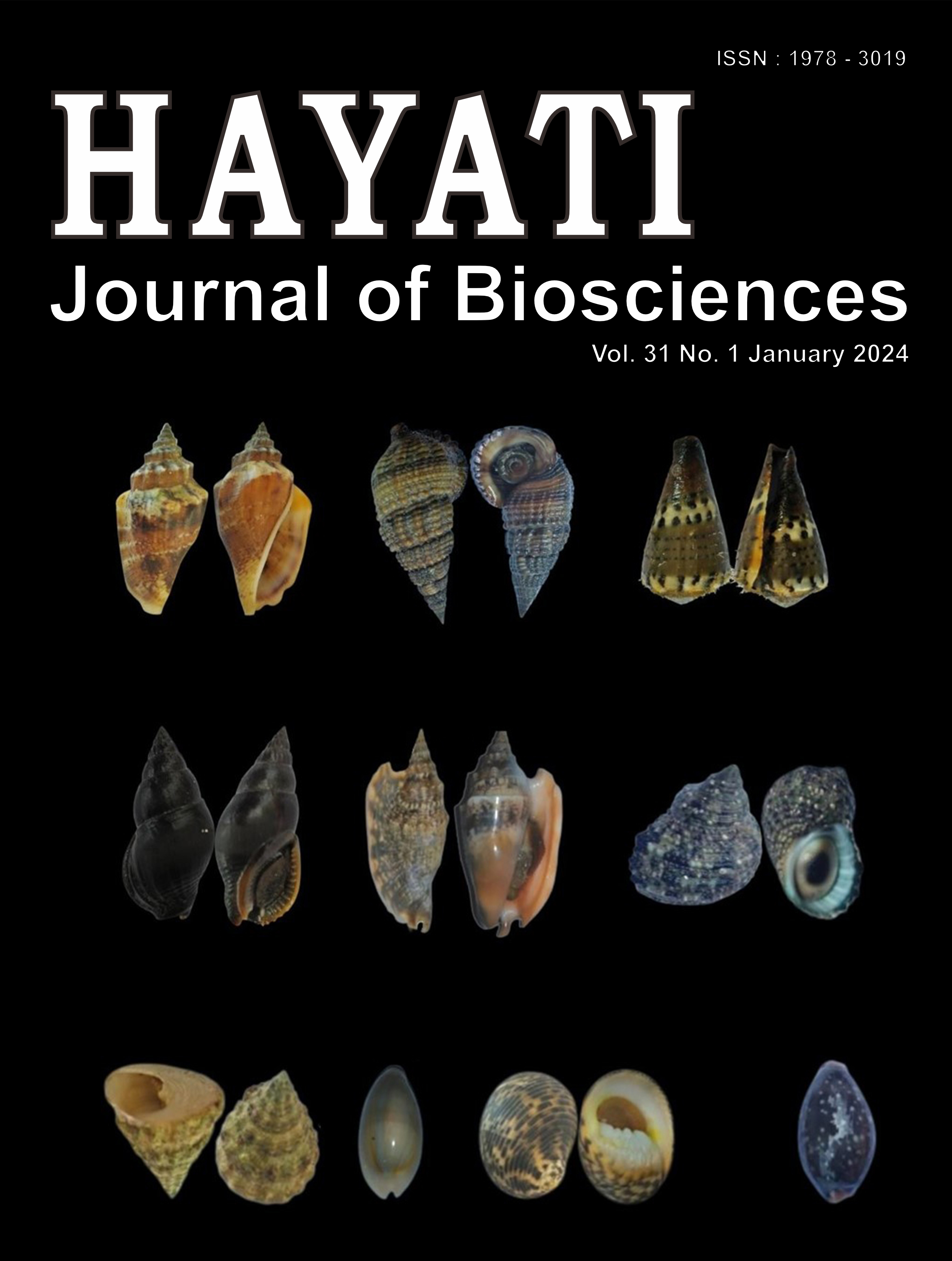Development of Few Significant SNP Markers from Transcriptomic Data for Selection of Sengon (Falcataria falcata (L.) Greuter and R. Rankin) Resistant to Boktor Stem Borer and Gall Rust Disease
Abstract
Sengon (Falcataria falcata (L.) Greuter and R. Rankin) plantations in Indonesia are threatened by attacks from Boktor stem borers and gall rust disease. Controlling pests and diseases is difficult therefore, planting resistant trees obtained from tree selection programs is necessary. Currently, genomic breeding often incorporates GWAS, which uses thousands of SNP markers to identify markers with significant associations with the traits studied. This study aimed to bypass such expensive studies by identifying and developing SNP markers from sequences of putative resistance genes to Boktor stem borer and gall rust disease, identified from sengon transcriptomic data analysis. A total of 496,194 putative SNP sites were identified from transcriptomic sequences using the SAMtools and BFCtools programs, of which 119 SNP sites were associated with resistance genes. Of the 101 non-synonymous SNPs selected, only 12 were located in the conserved domain of each gene and were used for primer design. Of the 13 primers designed, only 10 were successfully amplified. Validation of 10 developed SNP markers on 100 sengon accessions using the HRM method confirmed a significant association between SNP markers and resistance traits, with a -log 10 (P-value) between 10.49 and 16.63. A few SNPs markers developed from putative resistance gene sequences are associated with resistance traits in sengon. Therefore, the SNP markers could be applied in selection programs for sengon trees resistant to Boktor stem borers and gall rust disease.
Downloads
Copyright (c) 2023 Aditya Nugroho, Vilda Puji Dini Anita, Deden Derajat Matra, Iskandar Zulkarnaen Siregar, Ulfah Juniarti Siregar

This work is licensed under a Creative Commons Attribution-NonCommercial 4.0 International License.
HAYATI J Biosci is an open access journal and the article's license is CC-BY-NC. This license lets others distribute, remix, tweak, and build upon author's work, as long as they credit the original creation. Authors retain copyright and grant the journal/publisher non exclusive publishing rights with the work simultaneously licensed under a https://creativecommons.org/

























.png) IPB University
IPB University Department of Biology
Department of Biology The Indonesian Biological Society
The Indonesian Biological Society 

